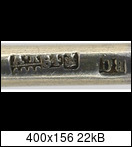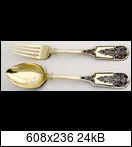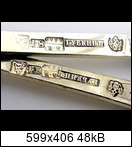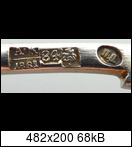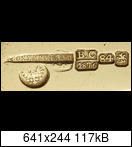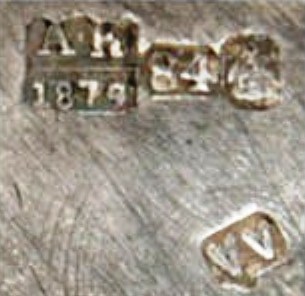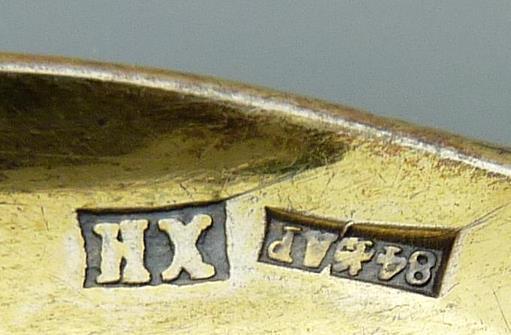Dear Goldstein,
Thank you for your thoughts and for your useful images.
If I understand it correctly you have two concerns about the Assay Master's mark;
1. that it appears to be the wrong date, and
2. that it is too poor a quality to be correct.
Problem 2 is a matter for experience and connoiseurship which only you and the other Russian experts can bring to bear, and if this is your main concern then that must be the end of the matter. However, if the date of the Assay Master is more important, there might be room for a useful short discussion:
Before posting on the forum I did try to research the marks as far as was possible both here and elsewhere, and note that at least two regular contributors here appear to state that in addition to Kowalskij, there was another Moscow Assay Master with the mark AK, name not yet known, who operated from either 1879 or 1880 to 1883 which, if I'm correct about the history of his workshop, would fit well with a likely date of manufacture by Khlebnikov. They are:
Zolotnik on Mar 02, 2011 and again on Sep 11, 2012 on this thread:
http://www.925-1000.com/forum/viewtopic ... cow#p75235 and
Qrt.S on Feb 27, 2009 on this thread:
http://www.925-1000.com/forum/viewtopic ... cow#p51069
With this in mind I suppose my question might be refined to: Has the community come to a consensus about whether Moscow Assay Master AK 1879-83 existed or not?
If it is accepted that he did exist, would this change your conclusions about the spoon?
Many thanks again,
Ionicorder




